Riding the Rails in Selma NC
A visit with David Peter Alan, contributing editor for Railway Age magazine
David Peter Alan first made a whistle-stop in Selma, North Carolina in September 2024 on his way from New York to New Orleans on the Amtrak Crescent train. I didn’t get a chance to meet him; just made arrangements with Melissa Dooley of Activate Selma to show him around. He met Mayor Byron McAllister, and stayed with Dina Flowers, a life-long resident who managed the Max G. Creech Selma Historical Museum along with Mary Fuller. He liked Selma’s hospitality so much, he came back to visit again for three days at the end of March.
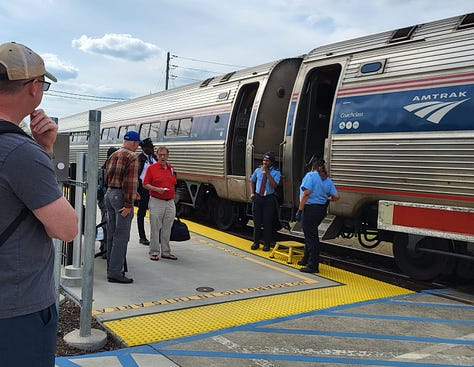

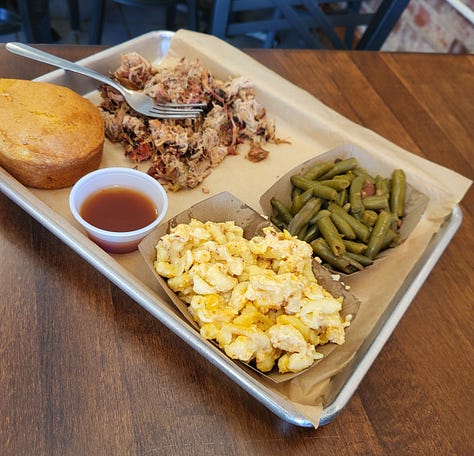
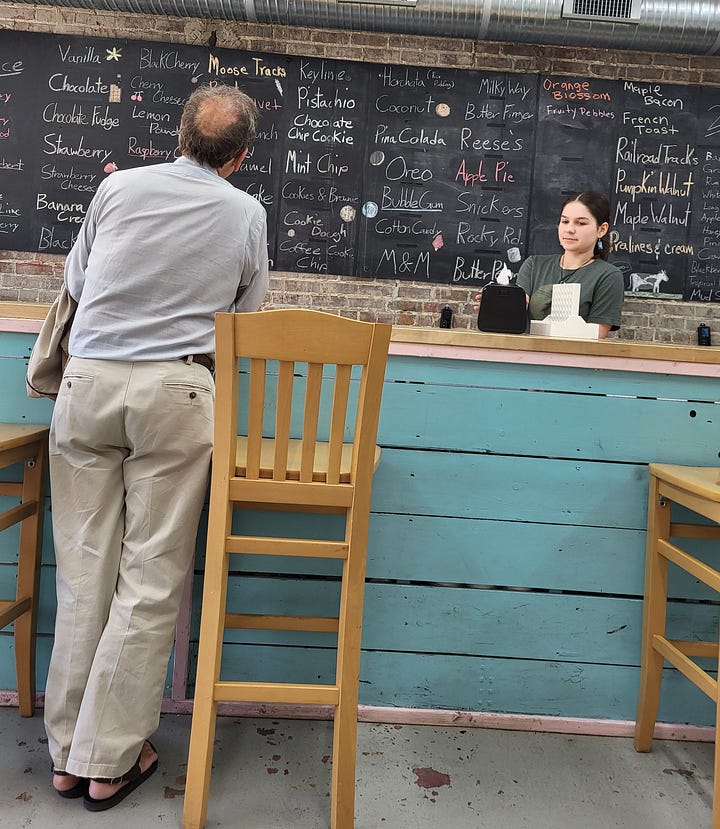
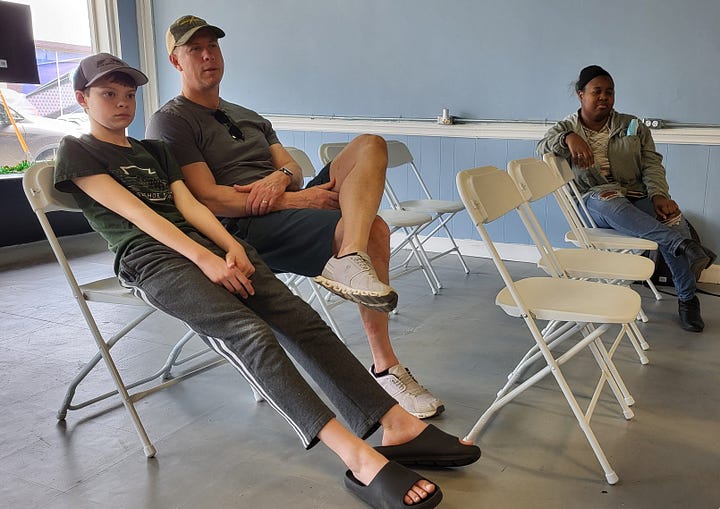

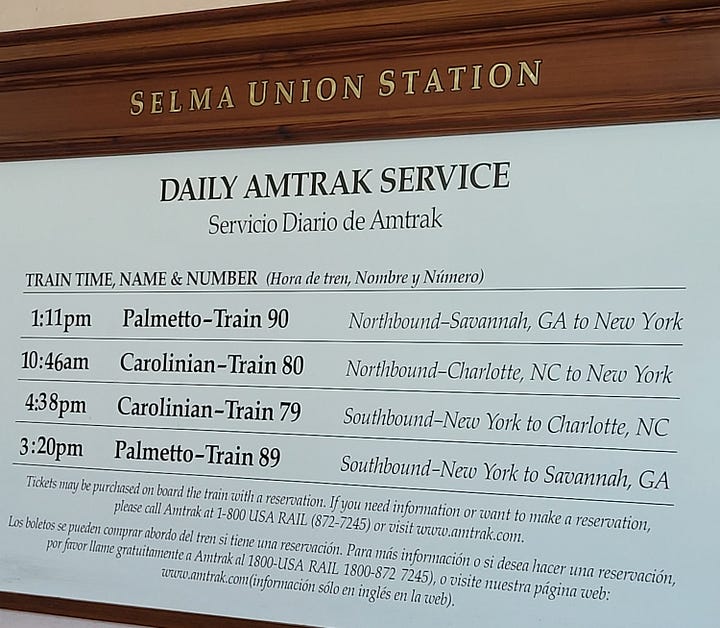
This time, I was his host, along with my husband, Curtis, an engineer for the Aberdeen & Rockfish Railroad. I picked him up from the Selma-Smithfield Station and he couldn’t wait to eat barbecue, just a few blocks away, at newly opened From the Ashes Smokehouse in downtown Selma. Afterward, we strolled down Raiford Street so he could peruse the 40+ flavors of ice cream at Old Fashioned Ice Cream and choose a few scoops. Before the visit was over, he had relished barbecue from Wilber’s Barbecue in Goldsboro, a meal at Parkside Cafe in Pine Level, a fish fry with the Brotherhood of St. Andrew at St. Paul’s Episcopal Church in Smithfield, and another trip for ice cream at Michael Sneed’s shop in Selma. Since he was so enamored with barbecue, I even took him on a winding drive outside of Princeton to Pikesville to visit the Nahunta Pork Center so he could see the whole hog in all its raw glory, packaged separately from head to curly tail with everything in between — from salt fatback and Tom Thumbs (sausages) to liver pudding, cracklings and chitterlings. For a Friday, that place was hopping with folks buying pork in bulk for their spring cookouts. On Saturday morning, Curtis took him to see railroad and museum sights in Goldsboro.
Since David is a contributing editor for Railway Age magazine, I corralled him into doing a community talk, “Riding the Rails,” at Vibe Central Events, a storefront venue in the heart of downtown Selma. He prefaced his comments with a disclaimer, that whatever he said was his opinion, not the magazine’s. He is also an attorney and an active advocate for transportation that helps “non-motorists” get around. David doesn’t drive, due to visual impairment or sight disability since childhood. That’s what I found fascinating. I’d never heard the term non-motorist before. All I knew was that 20 percent of Selma residents don’t own cars, so when there’s an event for children at the Selma Civic Center, often someone with a church bus has to drive around and pick them up. And on weekdays, many seniors at the Harrison Center for Active Aging depend on the limited-route QuickRide van to get where they are going. For a non-motorist like David, he can only visit where the train, bus or cab takes him. For example, he’d like to visit Asheville, but the train doesn’t go there. He can take the train as far as Salisbury or Greensboro, North Carolina, and transfer to a Greyhound bus that will take him on to Asheville. Coming back, however, there is no local bus in Asheville that can return him to the place where the Greyhound picks up. He could take a cab, but the Greyhound picks up at a gas station that is not open at that time. Standing outside waiting for a ride in the dead of night for a bus to meet a train isn’t safe. David quotes Blanche Dubois in Streetcar Named Desire: “Whoever you are—I have always depended on the kindness of strangers.”
At the “Riding the Rails” talk, an 11-year-old boy named Briggs came from Fuquay-Varina with his dad, Shane, to hear David speak. I believe the boy matched the man who has spent decades advocating for rail travel. Briggs and David went one-on-one talking policy, trends, rail routes and connections, and the need for legislators in Raleigh to connect the Old North State with long- and short-distance commuter rail. The possibilities seem grim in the current political climate, they agreed. The rest of us just watched them face off in amazement. It would have continued, but suddenly, a train horn sounded, and Briggs stood up and excused himself. “I have to go see it!” His father trusted him to run to the train station on his own, and Briggs texted him when he was on his way back from seeing the arrival of the Amtrak Palmetto #89 from New York to Savannah at 3:22 pm. After David’s talk, Briggs and Shane followed us to see David off on the 4:38 pm Amtrak Carolinian from New York to Charlotte, the first leg of his journey to New Orleans, and later, on April 7-8, to Fort Worth, Texas, where he would be speaking at the 21st Annual Southwestern Rail Conference at the Hurst Conference Center. It's the annual all-rail conference highlighting important freight and passenger rail projects and developments.
I’m not into trains like David or Curtis; just fascinated listening to them talk about their lifelong joy of them with the same exuberance as Briggs. But I had my own question, writer-to-writer, for David. See, I’m into the process of writing more than the result. Sure, there is a thrill when you open the mailbox and there’s the latest issue of a publication with your byline in it (the latest issue of Railway Age arrived at the US Post Office in Pine Level during his visit, and he thumbed to his article immediately). What I wanted to know, however, was about content. What was the subject that he wrote about that was the highlight of his career — his personal favorite? I know mine: an interview I did with Hiromi Dye, who spent time in a Japanese internment camp in the U.S. and was rescued by the Quakers, and went on to go to college and found the high-tech company for which I worked at the time. (My piece only ran in an employee newspaper. Here’s a link to an extensive oral history, collected by others, in the University of California’s Berkeley Library.) What was David’s? A subject that combined his love of jazz (he plays the piano) and his love of rail travel. How in the world do those two go together? You can read his August 10, 2020 article, Jazz and Rail: A 100-Year Musical Landmark, in Railway Age’s archives here. https://www.railwayage.com/news/jazz-and-rail-a-100-year-musical-landmark/
Someone once said (novelist John Gardner?) that there are only two plots in all of literature: “A stranger comes to town” and “a man goes on a journey.”
All I can say is, don’t turn down the opportunity to host a traveler on their way. You both, whether staying or going, experience life at the intersection of rail and road.




I wish I could take a train from Raleigh to Selma and back. I'd like to be a semimotorist. (NOT a truck driver, though.) I'd simply like the option of not driving most of the time.